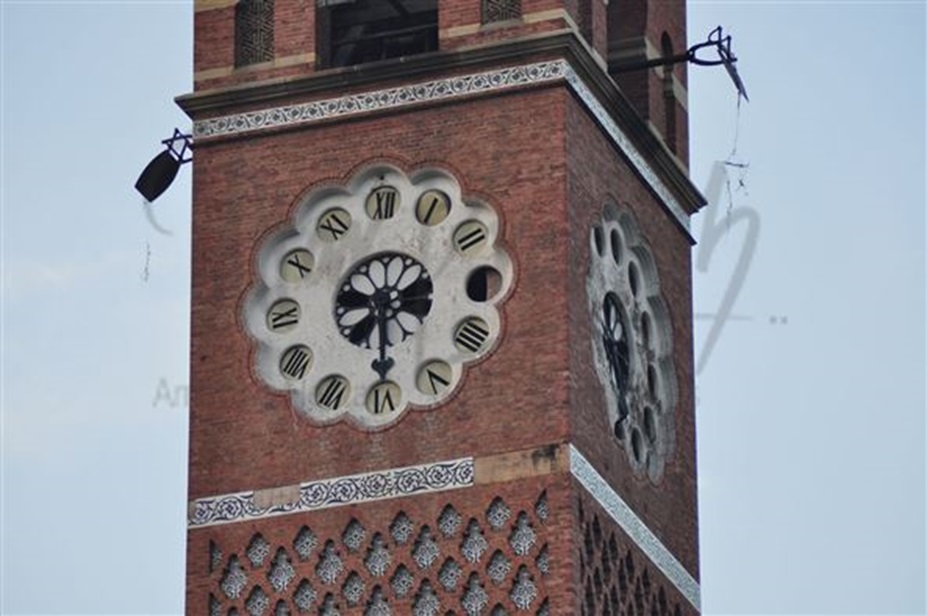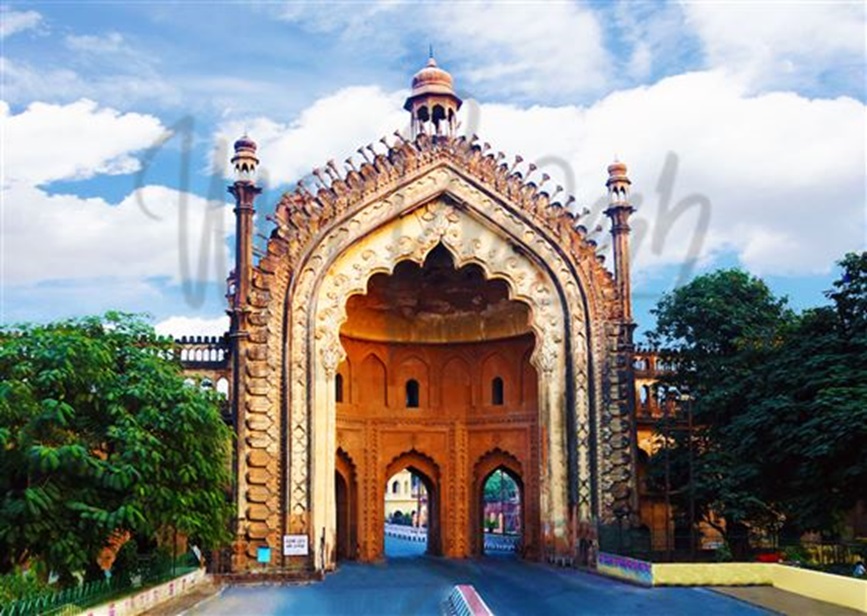Lucknow – Sample itinerary 8
*CHARBAGH RAILWAY STATION, LUCKNOW ( UTTAR PRADESH ) IMAGE COURTESY U.P TOURISM GOVT OF UTTAR PRADESH
Sample itinerary (Lucknow): 2 or 3 Nights.
The ‘golden city of the east’, Lucknow is regarded as one of the finest cities in India. Owing to its background, of having ‘ Nawabs’ ( erstwhile native governors ) as its inhabitants, genteel tastes and leisurely moods of life are its heritage.
Endowed with rich culinary and artistic attributes, the city embodies cultural refinement. Its legendary hospitality, intricate craftworks, educational institutions of eminence, a legacy in classical ( Hindustani ) music, and genteel politeness, all contribute to its recognition as a city of grace and charm.
It enjoys the status of being the largest city in the Indian state of Uttar Pradesh and is its state-capital. This is reflected in the metropolis being a blend of the historical with the modern.
ITINERARY
0900–1330 HRS: Start your immersive Lucknow Adventure. Drive to the Husainabad Heritage Zone.Visit the Bada Imambara.
Drive to the Husainabad (Chota-Imambara) Heritage Zone, visit Rumi Darwaza, Clock Tower, and the Terracotta Gallery. Enjoy an exhilarating Tanga Ride in this zone.
1130-1400 HRS Drive to the Next Part of Our Lucknow Discovery
War Chronicles. The British Residency walk amongst the breath-taking ruins of the British Residency, which was under siege for 148 days during the Indian uprising of 1857, and saw some of the fiercest fighting during the war. An intimate introduction to the history of the place and the people who once inhabited it.
1400 HRS LUNCH Savour vintage Awadhi Cuisine.
1500 HRS THE FRENCH CONNECTION
Constantia (La Martiniere and other French imprints). Post Lunch we indulge in the next exciting part of our tour, understanding the French Heritage and influence. Over the century that followed its founding as the capital of ‘Oudh’ in 1775, Lucknow was an important political and cultural hotspot. European adventurers, tradesmen and the East India Company officials interacted closely with the local nobility. The story of this evolving relationship can be clearly glimpsed through the surviving architecture of the era.

CLOCK TOWER, LUCKNOW ( UTTAR PRADESH ), IMAGE COURTESY U.P TOURISM GOVT OF UTTAR PRADESH
La Martiniere: Built and designed by the French soldier-turned-architect Claude Martin, it incorporates the features of Italian architecture, fused with native Hindu and Mughal architecture. Today it houses one of the leading educational institutions in the country, the La Martiniere College.
Some other sightseeing spots of eminence:
Charbagh Railway Station: A railway station with incomparable dimensions, yet aesthetically designed. The Charbagh Railway Station built in 1914 incorporates the best of Rajasthani and Mughal architecture. It gives an ideal traditional warm welcome to every visitor.
Rumi Gate: This colossal, ornate 60 feet high gate was built under the patronage of Nawab Asaf-ud-Daulah in 1784. It is said to be identical in design to an ancient portal at Constantinople.

*IMAGE COURTESY U.P TOURISM GOVT OF UTTAR PRADESH
Hussainabad Imambara/Chhota ( small ) Imambara: Though popularly called the Chhota Imambara, the Hussainabad Imambara was built by Nawab Mohammad Ali Shah ( 1837-42 ). It is ornate in design with exquisite chandeliers, gilt-edged mirrors, colorful stuccos etc. which adorn the interior. A golden dome and fine calligraphy on the exterior of the building make it an example of Mughal architecture.
Hussainabad Picture Gallery: Nawab Mohammad Ali Shah built it as a ‘ Baradari’ meaning having 12 doorways. It is now used as a gallery for the display of life-sized portraits of the Nawabs of Avadh. Open from 0800 hrs to 1700 hrs.
Bara ( Big ) Imambara: This magnificent monument recalls the glorious past of the Nawabs. Nawab Asaf-ud-Daulah built this Imambara which also houses his tomb. The remarkable feature of the Imambara is the pillarless 50 ft. high main hall and a labyrinth of intricate balconies and passages on the upper floor – The Bhul Bhulaiyya. To the left of the Imambara, is the imposing Asafi Mosque. Shahi Baoli is another attraction here.
Clock Tower: Constructed in 1887, the Hussainabad Clock Tower is one of the finest examples of British architecture in India. The 221 feet tall structure was built to mark the arrival of Sir George Couper, 1st Lieutenant Governor of the United Province of Avadh.
The Residency: Built for the British Resident during 1780 – 1800, it was originally a large complex of many buildings. It was the scene of dramatic events during the first war of Independence in 1857. Today, only scarred ruins bear witness to this turmoil.
Kaiserbagh Palace Complex: The Palace Complex commenced in 1848 and was completed in 1850 by the last Nawab of Avadh, Wajid Ali Shah. The buildings flanked by two Lakkhi Gates provided quarters to the ladies of the Royal Harem. In the centre of the quadrangle stands the Baradari, a white stone edifice of picturesque design.
Dilkusha Palace: Dilkusha Palace set amidst lush green lawns, is built in the Gothic style. The Kothi ( mansion ) and its adjoining magnificent garden, were created by Nawab Saadat Ali Khan. It is almost a replica of an English country house called Seaton Delaval, built in 1721.
Ameer Ud Daulla Library: It is Lucknow’s oldest public library with a collection of over two hundred thousand books! It was set up in 1868 and spreads over 3000 sqm. It has books on every imaginable subject, original manuscripts and erstwhile gazettes. Presently the library is undergoing digitization.
State Museum: The State Museum at Banarasi Bagh near Hazratganj houses a large collection of artifacts and memorabilia. The Numismatic, Handicrafts, Natural History and Ethnographic sections of the museum are particularly interesting. Timings: 10.00 AM to 5.00 PM. Closed on Mondays.
Bhatkhande: Bhatkhande Deemed University, formerly known as the Bhatkhande Music Institute is an eminent and sought-after music educational institution in Lucknow. It was established in 1926 by Vishnu Narayan Bhatkhande. The University offers music education in Vocal, Instrumental, Rhythmic, Dance, Musicology and Applied Music along with research. The institution owes its origins to Marris College of Music, named after Governor Sir William Sinclair Marris.
National Botanical Research Institute: It is a haven for nature lovers and an exploration ground for a variety of plants, flowers and floral crafts. It is one of the largest botanical gardens in India. The institute started functioning in its present form in 1978. The premises have a garden on 25 acres, a herbarium, laboratories and a huge library.
The Zoo: It is a popular picnic spot and houses a large number of animals and birds of different species. Timing: 8 AM to 6 PM. Closed on Mondays.
Gurudwara Yahiyaganj: It is a village near Lucknow city that houses a treasure trove of archaeological and historical significance. Surrounded by the Karela Jheel ( pond ), lie the traces of an ancient civilization that lived nearly 3000 years ago or settled in 1000 BCE. The mounds around here reveal relics that speak of a glorious civilization.
Jain & Buddha Temples: Among places not to be missed are the Jain Temples of Lucknow. These temples include Lord Shantinath and Lord Padma Prabhu Temple, Lord Parshwanath Temple, Lord Sambhavnath Temple or Sobnath temple where excavation revealed several idols of the Tirthankaras.
There are two popular Buddhist temples in the city. These are Buddha Dharmankur Sabha and Budh Vihar Temple on Risaldar Road. The former temple is the older of them and was constructed in 1907. The serene and calm environment of these temples, reminiscent of Buddhist monasteries, is ideal for meditation.
Kazmain: Kazmain Rauza was built by Gulam Raza Khan in honour of Imam Musa Kazim. The monument is an exact copy of the mausoleum of the seventh and eighth Imams in Iraq. The gateways, courtyards and galleries are what make the monument unique along with the tombs of the builder and his wife.
Lord Hanuman Temple: Another landmark to showcase the secular culture of Lucknow. The Lord Hanuman Temple of Aliganj is a beautiful temple built by the wife of Nawab Mohammad Ali Shah, Begum Rabiya. Yet another Hanuman Temple called the New Hanuman Temple was built later by the commander in Ali Begum’s army. The architecture of the old Hanuman Temple exhibits an amalgamation of Hindu and Islamic styles. The temple has a pond and a serene garden.
St. Joseph’s Cathedral Church: It stands as an oasis of serenity amidst the hustle and bustle of the markets around it. The architecture of the edifice is something else! It features a gigantic statue of Jesus that draws the spiritually minded to this place of worship. It was built in the 19th century by an Irish priest. The upper part of the church is in the shape of a crescent, topped by a tall column with a huge cross on it. The prayer hall is located on the first floor of the building. The hall has several beautiful paintings depicting the life of Jesus Christ.
Indira Gandhi Planetarium: Situated at Suraj Kund Park, the Saturn-shaped building of this planetarium is unique.
Show timings: 1.00 PM to 1.40 PM, 2.00 PM, 3.00 PM, 5.00 PM, 6.00 PM. Closed on Mondays.
Janeshwar Mishra Park: An urban park in Gomti Nagar, made in the memory of the late politician Janeshwar Mishra, is claimed to be Asia’s largest such garden. The park has been designed on the lines of Hype Park London. It provides a sustainable habitat to various species of birds and also doubles up as a major entertainment and recreational centre for all sections of society.
